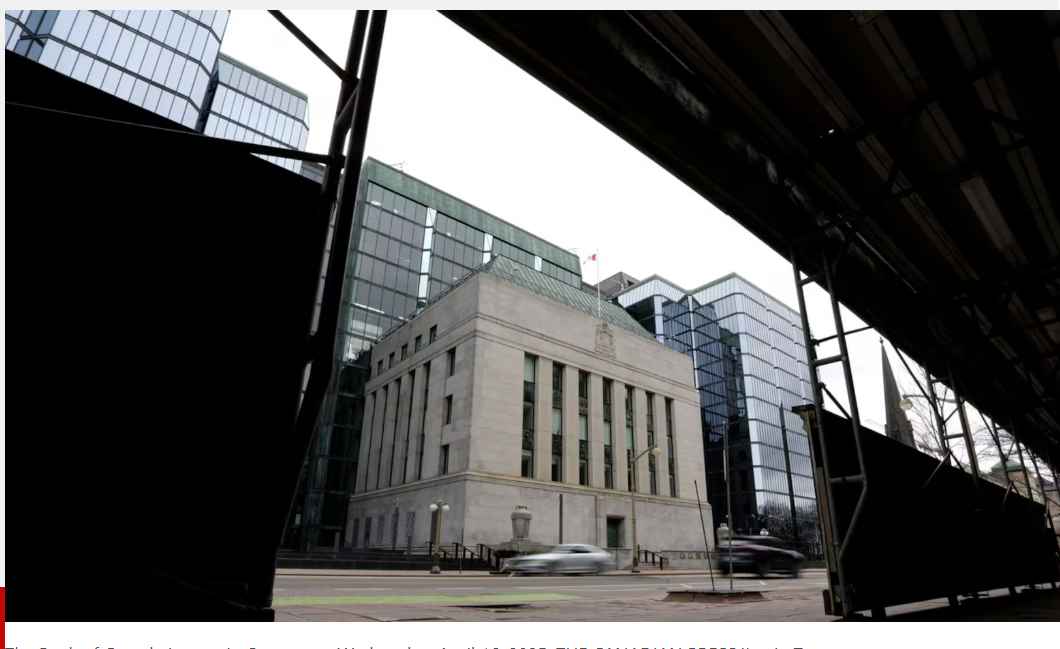Today, the Bank of Canada maintained its key interest rate at 2.75 per cent — the same level it’s been since March — citing the continued lack of clarity around tariffs and the outcome of Canada-U.S. trade talks.
On Wednesday, the central bank released its decision on the target for the overnight rate as well as its latest monetary policy report, noting that “with uncertainty about U.S. trade policy still high, the outlook for the Canadian economy remains clouded.”
Holding the rate again this month, for the third straight time, was widely forecasted by the big Canadian banks, with inflation remaining close to the Bank of Canada’s 2 per cent target.
Canada is currently staring down a Friday deadline imposed by U.S. President Donald Trump to reach a new trade deal or face potential 35 per cent tariffs on non-Canada United States Mexico Agreement (CUSMA)-compliant goods, as well as threats of new sectoral tariffs.
The central bank, without naming Trump, said there has been some clarity offered on the state of “global trade conflict,” with the U.S. recently inking new trade pacts with some other countries. However, in Canada, the persisting trade unpredictability is layered, and compounded now by the strong likelihood of some level of tariffs lingering post-August 1.
There’s the need to consider how challenging it remains to predict what tariffs and countermeasures will be imposed, how long they could last, how trade negotiations could play out, as well as how households and businesses would react and adapt accordingly, the Bank said.
As a result of the lack of clarity on these factors, on Wednesday the Bank of Canada did not offer a base case projections for GDP growth or inflation, domestically or globally.
Instead, July’s report outlines three scenarios conditional on potential trade outcomes: one based on the current tariff scenario, one called the “de-escalation” scenario in which tariffs are reduced, and a third “escalation” scenario where tariffs are “substantially” increased, essentially seeing Canada losing the shield of CUSMA-compliance.
In the current scenario, global economic growth is set to slow modestly by the end of the year, while the tariff-easing outcome would see economic growth rebound faster, and a dramatic ratcheting up of the trade war would result in economic contraction through the remainder of 2025.
“If a weakening economy puts further downward pressure on inflation and the upward price pressures from the trade disruptions are contained, there may be a need for a reduction in the policy interest rate,” the Bank said, offering some clarity on what it would take for a rate change.
The Bank also noted that the Canadian economy is “showing some resilience,” though growth in business and household spending is being restrained by the uncertainty. And, while labour market conditions are weakening in trade-affected sectors, employment is holding up in other parts of the economy.
“CPI inflation was 1.9 per cent in June, up slightly from the previous month. Excluding taxes, inflation rose to 2.5 per cent in June, up from around 2 per cent in the second half of last year,” the Bank states in Wednesday’s release.
Governor of the Bank of Canada Tiff Macklem and his senior deputy Carolyn Rogers will be holding a press conference to further detail their decision, at 10:30 a.m. ET.
Economists are also closely watching what the United States Federal Reserve decides in its rate decision, also coming Wednesday.
The Bank of Canada is scheduled to announce its next decision on the overnight rate target on September 17.


